Last updated on July 8th, 2024
Featured image: With its stunning architecture, Ronda is one of my favourite Spanish Towns | Photo by wirestock on Envato
Ancient cities, UNESCO World Heritage sites and art heighten Spain’s appeal
by Carolyn Ray
What do all Spanish towns have in common? Aside from history, culture and delicious food, I’ve found there’s an energy and passion for life that doesn’t exist anywhere else. Is it the sunshine, the beautiful landscape or the kindness of the people?
Over the past 10 years, I’ve fallen in love with Spain and have had the opportunity to stay in many small towns across Spain, across Andalucía, Catalonia, the Basque Country and Galicia. While many flock to Madrid and Barcelona, I prefer smaller Spanish towns where I can wander the streets and get lost, like Malaga, Ronda, Cordoba, Seville and Girona.
My five favourite Spanish towns
In Spain, some archaeological sites are still being discovered, ancient ruins are being restored, and its history — and its story — is still unfolding. In a country that has really only emerged from the dictatorship of Franco and the Spanish Civil War, Spain’s history is unique — a blend of many cultures, including the Phoenicians, Visgoths, Iberians, Romans and Arabs.
1. Malaga: Wander off the main street
The first time I came to Malaga, I stayed near the main shopping district of Calle Larios, which is lined with high-end stores. But when you step off the main street, there’s so much more to see. Malaga is the kind of city you can wander in and never feel uncomfortable. Before long, you’re discovering small churches, street art on Calle Lagunillas, museums in palaces and markets with the freshest food imaginable.
A climb up to the Alcazaba Fortress and Gibralfaro Castle reminds you that this is an ancient city, one that has only recently been rediscovered. The Alcazaba, for example, was abandoned for centuries and became a slum. The 1st century AD Roman Amphitheatre was just discovered in 1951. Just down the road in Maro are the prehistoric Nerja Caves, with some of the oldest cave paintings in the world.
Picasso was born in Malaga and you’ll want to visit his childhood home, Casa Natal Picasso, on the charming Plaza de La Merced, the Picasso Museum, and the Iglesia de Santiago church where Picasso’s parents were married and he was christened. With this being the 50th anniversary of his death in 1993, it’s the perfect time to visit Malaga.
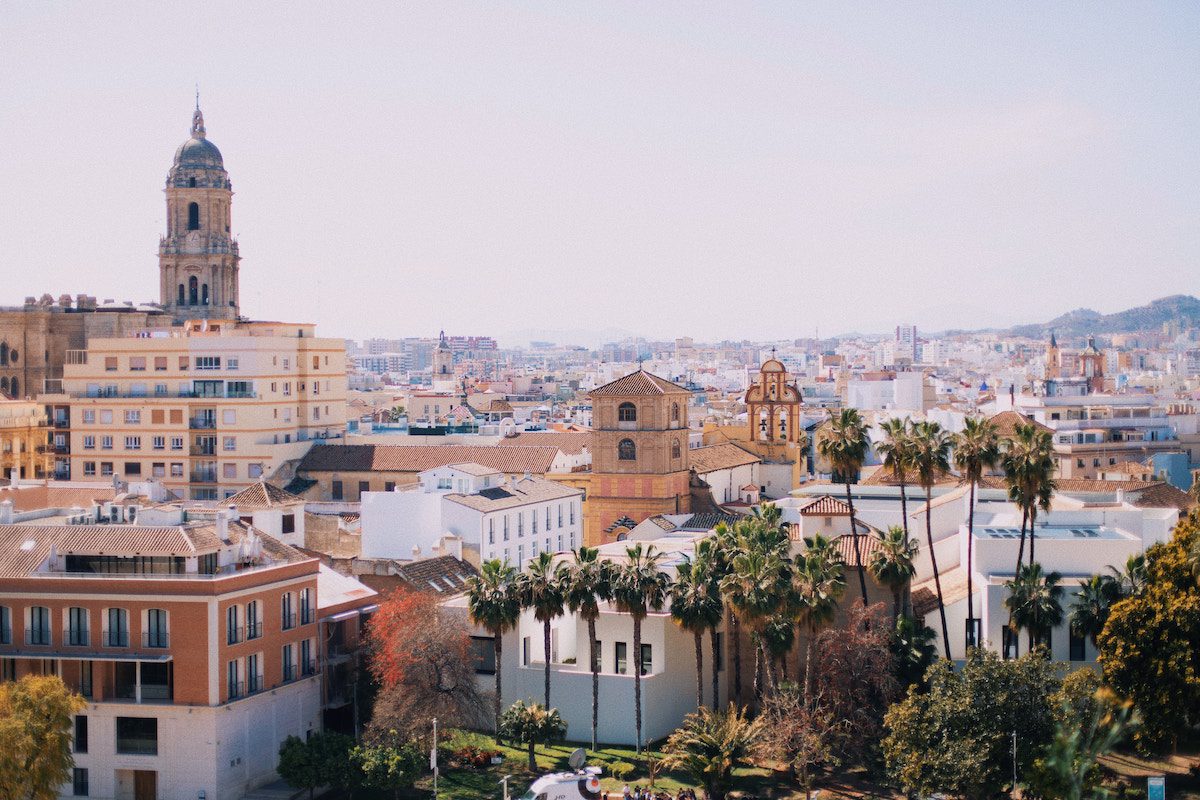
Malaga is a city perfect to get lost wandering in / Photo by Jonas Denil on Unsplash
2. Ronda: City of bridges
When I visited Ronda in January, I drove from Malaga in an adorable Fiat 500 (find a rental car here). Even in the rain, it’s clear that the Puento Nuevo (new bridge) is an architectural feat. This is actually the second bridge; the first one collapsed in 1735. The bridge connects two plateaus separated by the magnificent gorge called the Tajo de Ronda.
For the best view of the ‘new’ bridge, walk down to Arco de Crista or near the Parador Hotel. Don’t miss a visit to the Arab Baths, which are located near the Roman Bridge (the original entrance to the city). It’s very steep so make sure to wear comfortable shoes.
Near the bullring, visit the tourism office and pick up a municipal ticket for €9 (retired rate), which gives you access to all of the tourist places. There’s also a street named after Hemingway, who spent a considerable amount of time in Ronda. Modern bullfighting was practically invented here when local bullfighter Pedro Romero decided to confront the bull on foot instead of on a horse. In addition to naming a character Pedro Romero in his 1926 novel The Sun Also Rises, Hemingway also wrote two non-fiction books about Ronda: Death in the Afternoon (1932) and The Dangerous Summer (1985).

Ronda’s astonishng Puento Nuevo bridge / Photo credit By SeanPavone via Envato
3. Córdoba: An Awe-Inspiring UNESCO World Heritage site
There is nothing more awe-inspiring than standing inside the Mezquita-Catedral, one of the most famous monuments of Western Islamic (Moorish) architecture in Spain. Built from 784-786 AD by Abd al-Rahman, its 800 granite and marble striped arches in the main Muslim prayer space are a place of wonder. The mihrab has been painstakingly restored to its original splendour, framed by an exquisitely decorated arch of gold glass with shimmering hues of blue, brown, and yellow.
Córdoba has miraculously survived for thousands of years, through dynasties, wars, and earthquakes. In the eighth century, it was taken over by Muslim conquests and became the capital of the Umayyad Caliphate of Córdoba. It has more UNESCO World Heritage Sites than anywhere in the world, including the Alcázar, the Roman bridge and the Mezquita-Catedral (Great Mosque of Córdoba), which is now a cathedral. The UNESCO status has since been expanded to encompass the whole historic centre of Córdoba, Medina-Azahara and Festival de los Patios, a 12-day festival that happens in May.
Take the train from Malaga and the #3 bus from the train station to get to the old down (check train schedules here). Stay at the Balcon de Cordoba, which includes breakfast. It’s warm enough to eat outside all year, even in January.
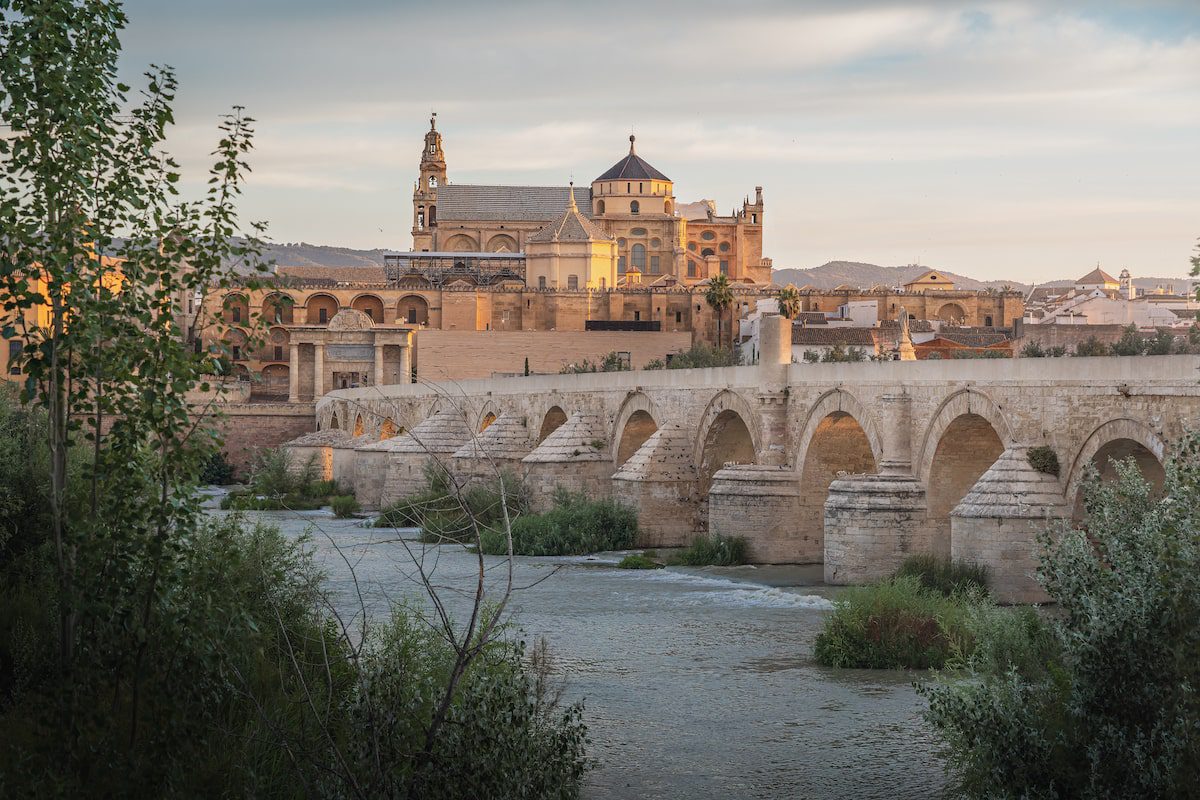
Old Roman Bridge and Mezquita Catedral at sunrise in Córdoba / Photo by diegograndi on Envato
4. Seville: The Heart of the Spanish Inquisition
On Christmas Eve, I wandered the Seville Alcazar and its beautiful gardens, and the Seville Cathedral, one of the largest churches in the world as well as the largest Gothic church. Like Cordoba, several mosques preceded it and fortunately some of the architectural elements can still be seen, notably the Patio de los Naranjos, the courtyard of the original mosque.
When I spent the Christmas holidays in Seville, I wasn’t sure how ‘open’ restaurants would be, but was pleasantly surprised. My hotel, El Rey Moro, was practically empty so I made it my own. On December 28, I took a two-hour walking tour of the Jewish Quarter and learned about one of the darkest periods in Spain’s history, the Inquisition. Across the river in Triana, Castillo San Jorge in Seville was at the centre of it from 1481 to 1785.
As you travel through Spain, look for the symbol of the Sephardi Jews (those who came from Seville); it’s shaped like the Iberian peninsula. There are still many Sephardies (Spanish Jews) living around the world because of the Diaspora (dispersion of the Jewish community). These symbols indicate places of importance to the Jews, as guideposts to the past.
Where to stay: Find the perfect place to stay in Seville by clicking here
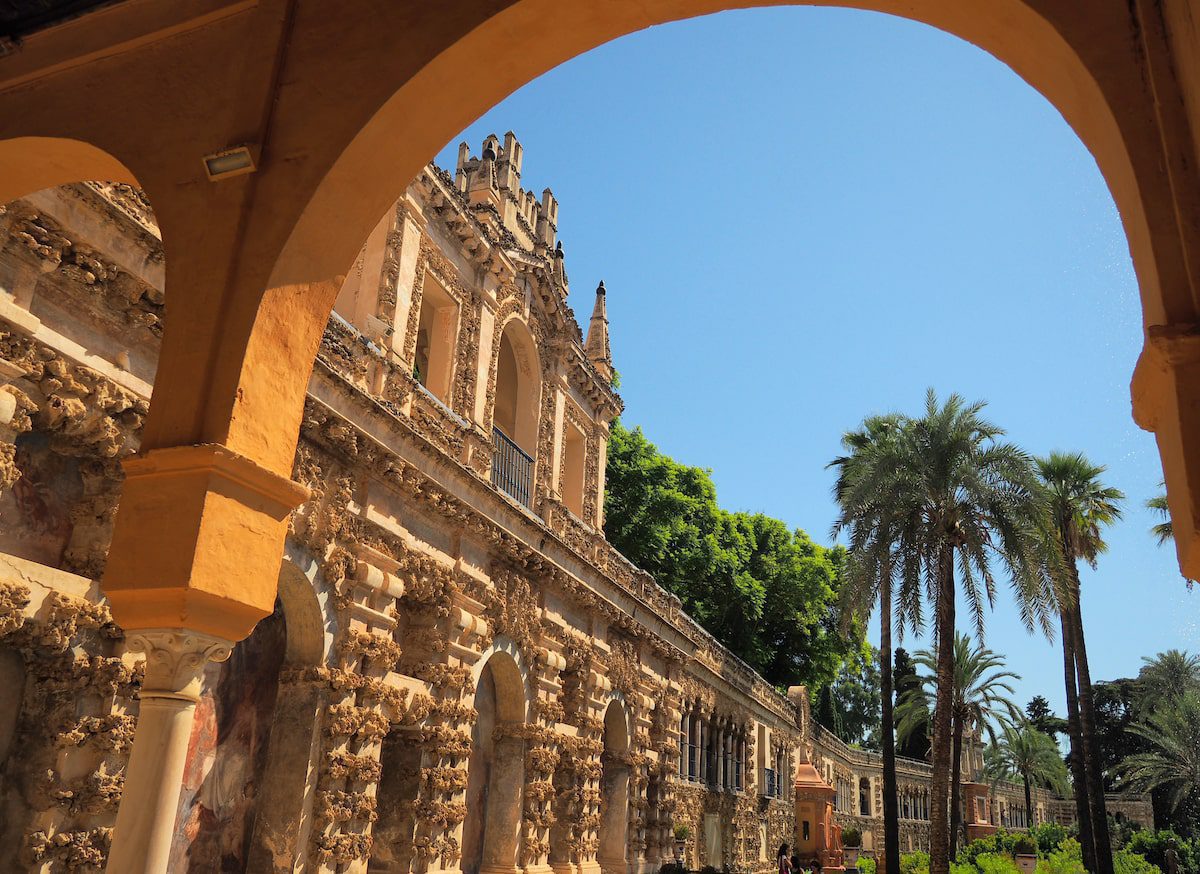
Beautiful gardens surround the Royal Alcazar in Seville / Photo by Dmitry Dzhus via Wiki Commons
5. Girona: Walking and more walking
Girona is a town for walking, walking and walking. There’s the Muralla de Girona (Roman wall) that overlooks the Roman ruins, and the 90-step walk up the Girona Cathedral. If that’s not enough, a short bus ride takes you to the Costa Brava, where you can hike the Cami de Ronda along the coast and visit picturesque towns. Check out Walking Costa Brava, which offers guided tours. I stayed for two weeks but could have stayed for a month or more!
Find the perfect walking tour in Girona here!
Known for its colourful houses and Eiffel Bridge along the River Onyar, Girona is one of the most charming towns in Spain. Originally settled by the Iberians as Gerunda, it has everything – medieval history, museums, Roman ruins, Gothic cathedrals, restaurants, unique shops and one of Europe’s best-preserved Jewish Quarters. You might also recognize it as the filming location for Bravos in Game of Thrones.
Stay in or near the Old Town and you can walk to the train station in about 15 minutes and be in Barcelona within minutes on the high-speed or regular train (get tickets here!). When you visit, don’t miss the wonderful Girona Museum or the Jewish Museum, set in its historical Jewish quarter. Nearby is Figueres and the mind-bending Dali Theatre-Museum and his home in Cadaqués. I also took a food tour with Girona Food Tours. Restaurants to try include Café le Bistrot, SOL Gastrobar, Can Roca and Espresso Mafia.
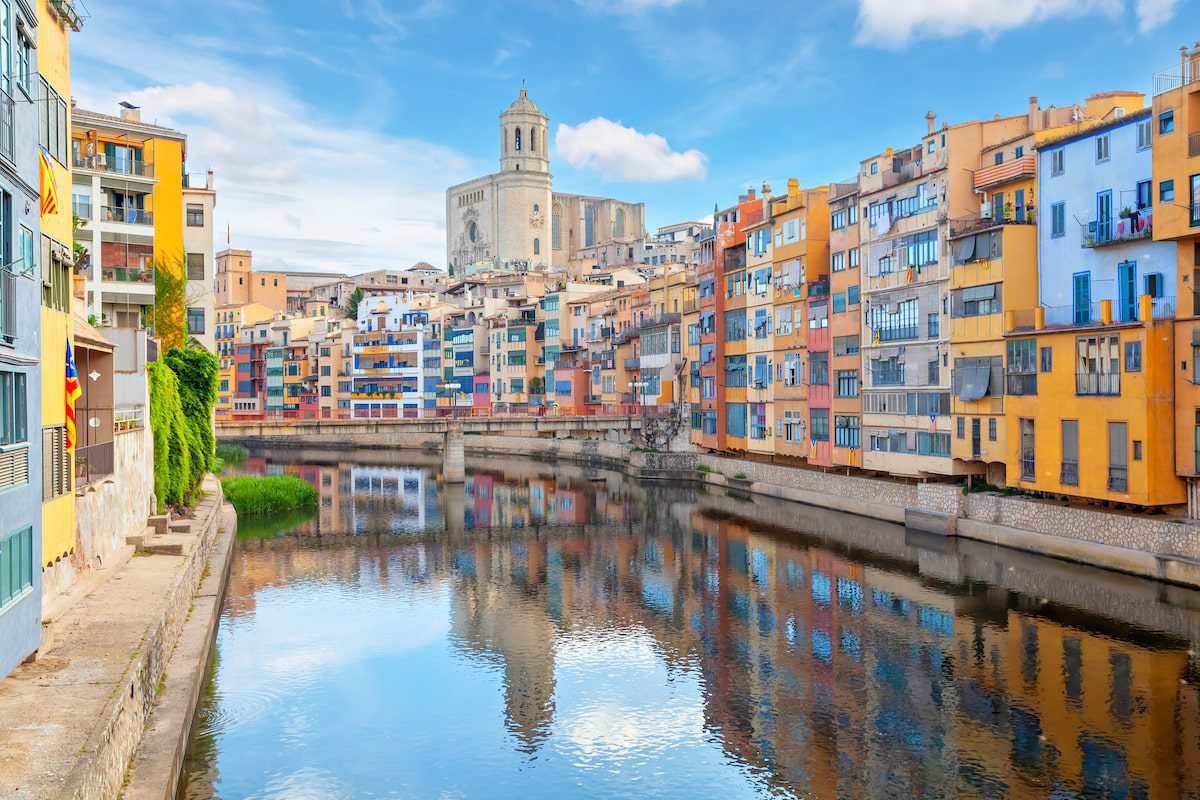
View of the Cathedral and colourful houses in Girona, Spain / Photo by bbsferrari on Envato
These are just five of my favourite Spanish towns in a country that I’ve spent so much time in. Other suggestions include Cadiz, where I rang in a new year in 2017, Sitges, just south of Barcelona, and Segovia, with it’s incredible Roman aquaduct. What are some of your favourite Spanish towns? I’d love to discover them!
More from Spain to Discover
Transforming an Abandoned Quarry Into a Vineyard: A Story of Sustainability in Mallorca
On the wine-producing island of Mallorca, Spain, entrepreneur Virginia Pones is bringing an abandoned quarry back to life as a winery, reviving her husband’s family business.
A Solo Trip to the Basque Region: Bilbao, San Sebastian and Biarritz
The Basque region, straddling northern Spain and southern France, is an area often forgotten by travellers to Spain, but from the moment I arrived I fell in love with its cultural richness, natural beauty, and food.
Riding Solo: Active Travel for Women Over 50
For women over 50 who want to stay active while travelling, group cycling trips offer a way to make connections while seeing the world.

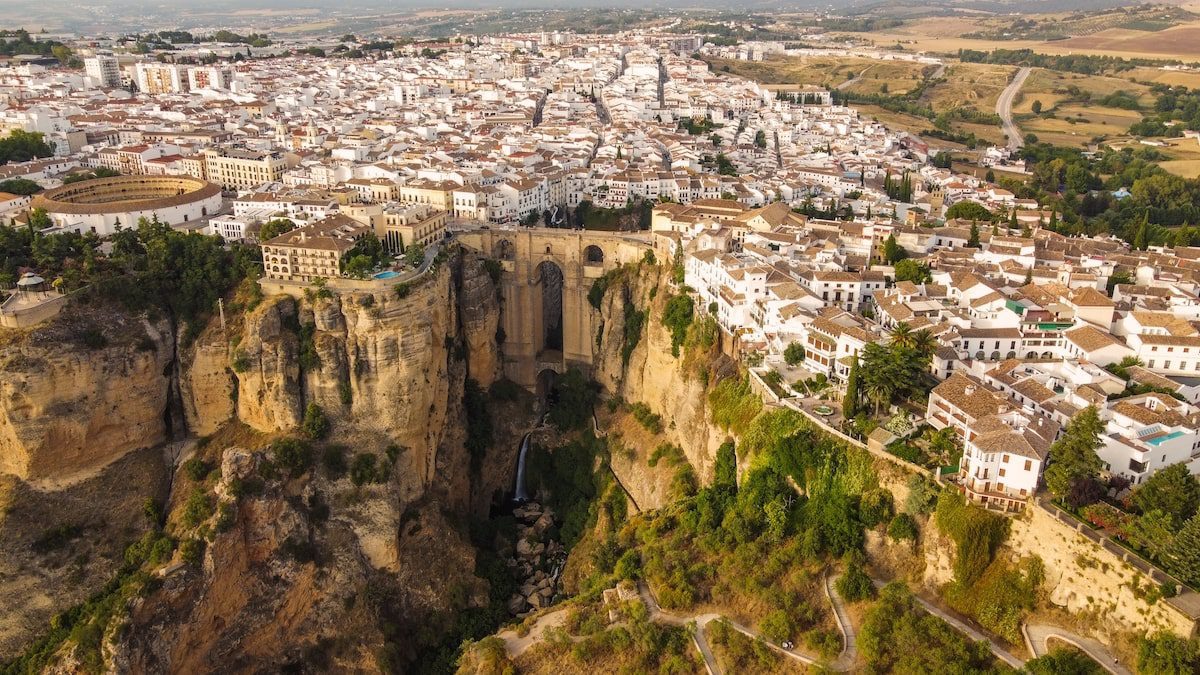



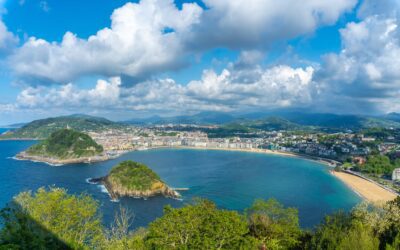

0 Comments
We always strive to use real photos from our own adventures, provided by the guest writer or from our personal travels. However, in some cases, due to photo quality, we must use stock photography. If you have any questions about the photography please let us know.
Disclaimer: We are so happy that you are checking out this page right now! We only recommend things that are suggested by our community, or through our own experience, that we believe will be helpful and practical for you. Some of our pages contain links, which means we’re part of an affiliate program for the product being mentioned. Should you decide to purchase a product using a link from on our site, JourneyWoman may earn a small commission from the retailer, which helps us maintain our beautiful website. JourneyWoman is an Amazon Associate and earns from qualifying purchases. Thank you!
We want to hear what you think about this article, and we welcome any updates or changes to improve it. You can comment below, or send an email to us at [email protected].